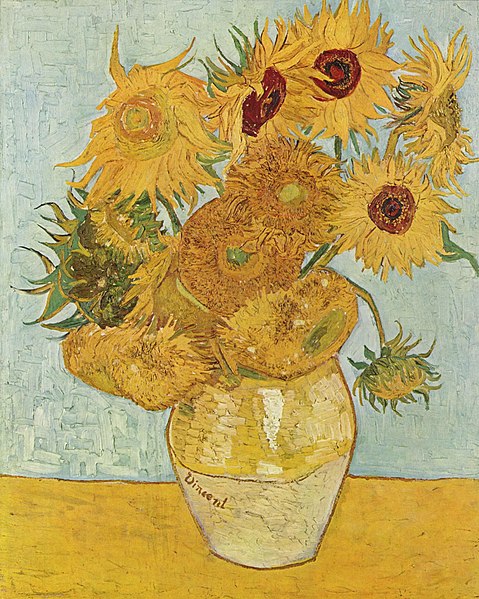 |
| This is the original done by Schiele in watercolor on paper... |
 |
| ...And this is Stimson's exact copy, done in marker on aluminum foil. |
Besides his many self-portraits, Schiele also painted a portrait of sunflowers, which is the one shown below.
 |
| Egon Schiele, Sunflowers, 1911. Watercolor and pencil on paper. 17 1/8 in. x 11 1/2 in. |
The work features a collection of wilted sunflowers that have passed full bloom and are beginning to die after sowing their seeds. Schiele based this work on one done by his mentor, Gustav Klimt, who in turn borrowed the idea of sunflowers from Vincent Van Gogh.
 |
| Gustav Klimt, Farm Garden with Sunflowers, oil on canvas. 1912. |
 |
| Vincent van Gogh, Sunflowers. Oil on canvas. 1888. |
Artists can influence other artists generations ahead. Of course, with all of this artistic "borrowing," it becomes difficult for a casual viewer to draw the line in the ground and call a work completely original; when one thinks about it, one could argue that all artists borrow from each other. Artists use mostly the same media, the same tools, and most importantly the same inspiration: the real world. I could see that in Sarah Stimson's exhibit.
http://www.artbusiness.com/copyprobs.html
For a biography on Egon Schiele and a related gallery of his works, visit
http://www.artchive.com/artchive/S/schiele.html
Egon Schiele was considered a part of the Expressionist movement. For an article on Expressionism, visit
http://www.artyfactory.com/art_appreciation/art_movements/expressionism.htm
No comments:
Post a Comment